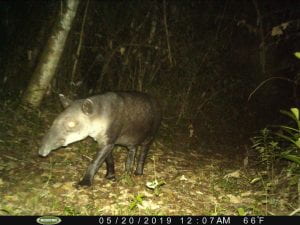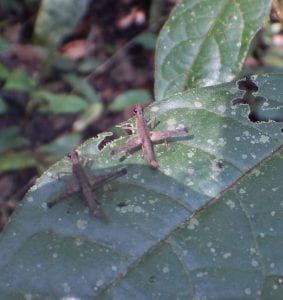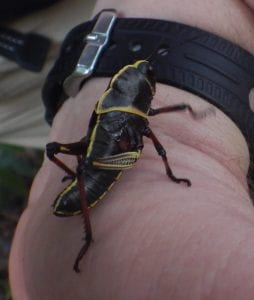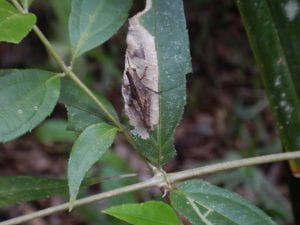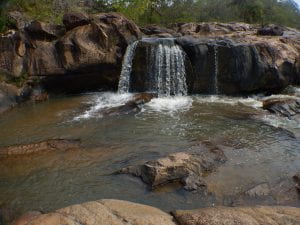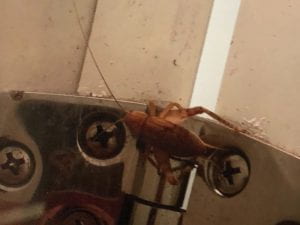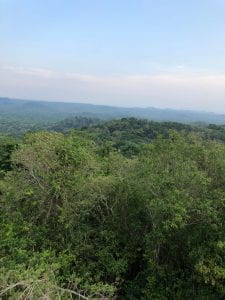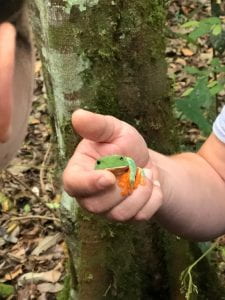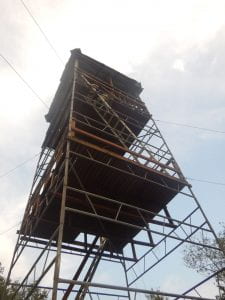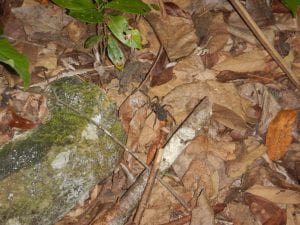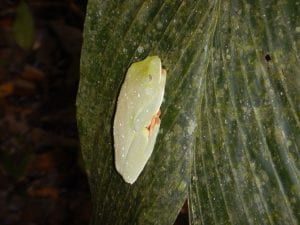I didn’t wake up early enough for bird watching, so I slept in and had breakfast at 7 am. Then we all peed in vials to use for our research project. Because pee is a source of ammonium, it can be used in an experiment to determine if the rainforest floor or canopy is more nitrogen deficient. My pee is currently on a tree and underground under the tree, and hopefully it brings good results.
In the afternoon, we went to a cave opening which was huge. The cave was thought to be a Mayan Pilgrimage site where they perform ceremonies. I got to give my Orthoptera presentation inside the cave and we also saw one cave cricket which are in the Rhaphidophoridae family!
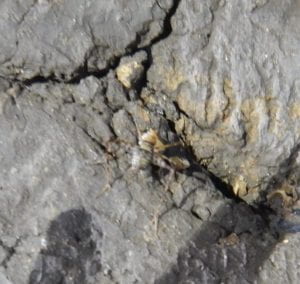
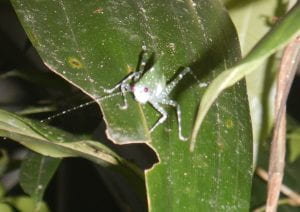
Overall, I saw a lot of Orthoptera today including the first katydid I’ve seen. This katydid was green with white spots on the body and had red eyes. Even the antennae have white dots along them.
I saw a lot of little gray grasshopper nymphs on a leaf again today and several crickets from the Gryllidae family.


